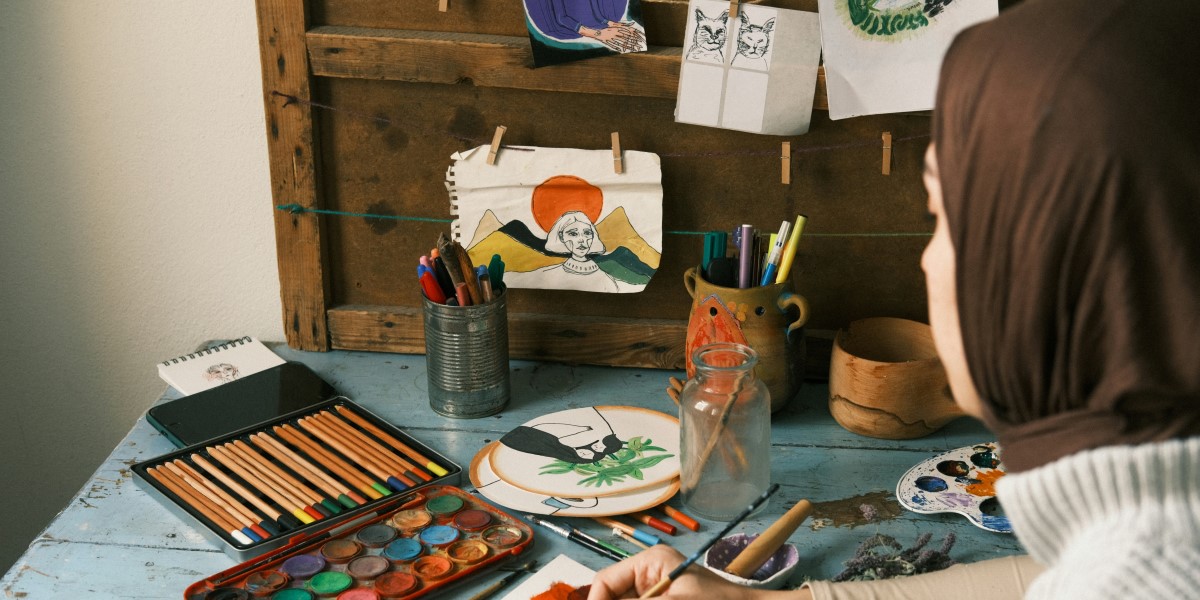So, a passion for creating has sparked, and a canvas awaits the expression of inner artistry. Before diving into colors and imaginative strokes, a key question often comes up: should one choose acrylic or oil paint? Both are popular choices, yet they offer distinct experiences for artists. Understanding what makes these artistic options different helps in making an informed decision.
Read also: Where to Buy Canvas Paintings in NYC: A Comprehensive Guide
What Makes Acrylic and Oil Paints Different at Their Core?

The primary distinction between acrylic and oil paints lies in their binding agents. Think of the binder as the substance that holds the color pigment together and allows it to adhere to a surface. In acrylic paints, the binder is a synthetic polymer, a type of human-made plastic. This composition gives acrylics a notably fast drying time—some colors can dry in as little as 30 minutes.
Oil paints, conversely, use drying oils, such as linseed or poppyseed, as their binder. These oils require a much longer time to dry, sometimes taking days or even weeks, depending on how thickly the paint is applied. This occurs because drying oils undergo a chemical reaction with oxygen in the air, causing the paint to solidify. This extended drying window allows artists to blend colors more smoothly and achieve seamless transitions between hues.
Deciding which drying time is better depends entirely on an artist’s personal approach. Acrylics are well-suited for quick sketches, techniques that involve layering one color over another, and creating bold, graphic pieces. Their rapid drying time allows for efficient work. Oil paints, with their extended open time, are ideal for highly detailed efforts, realistic renderings, and building smooth color gradients.
How Do Cleanup Processes Differ Between the Two Paint Types?
The difference in binders also directly affects how one cleans up after painting. Acrylics are water-based, meaning brushes can be simply rinsed with soap and water. This makes them a convenient option for those new to painting or anyone preferring a straightforward cleanup process. Oil paints, however, require solvents like mineral spirits or turpentine to remove the paint from brushes. These solvents can be strong and produce significant fumes, so ensuring proper ventilation is crucial when working with them.
While oil paints might seem like the more involved option for cleanup, their slow drying time offers a distinct benefit. Because they remain workable for longer periods, it’s easier to correct mistakes by wiping away wet paint with a clean brush or rag and reworking the area. Acrylics, with their quick drying, demand more planning and precision. A single brushstroke can become a permanent part of the painting, emphasizing the need for a steady hand and a clear vision.
Exploring Color Differences: Vibrancy Versus Depth
A notable difference between these mediums can be seen in their color characteristics. Acrylic paints are widely recognized for their vibrant and intense colors. Their synthetic binders allow for the use of a wide array of pigments, leading to a dazzling spectrum of hues. Oil paints, while providing a rich and classic appearance, tend to present a subtler color palette. This is partly because the drying oils can sometimes slightly lessen the vibrancy of the pigments over time.
However, oil paints hold an advantage when it comes to layering. Since they dry slowly, artists can apply thin glazes of color on top of one another, building a beautiful depth and luminosity that can be challenging to achieve with acrylics. This technique of layering is often what gives classic oil paintings their characteristic richness and complexity.
Read also: From Blank Canvas to Masterpiece: Tips to Start Painting Today
Which Paint Medium is the Right Choice for Your Artistic Journey?
Ultimately, the choice between acrylic and oil paints comes down to individual preference and artistic expression. Does one prefer bold colors and a fast-paced creative flow? Then acrylics might be a perfect match. Is one drawn to a slower, more contemplative process of building depth and realism? Oil paints could be an ideal artistic partner.
The encouraging news is that there are no strict rules. Many artists experiment with both mediums, using each to its specific strengths. So, the best approach is often to explore both options and discover which artistic path truly ignites one’s creative spark. The most important element in any artistic endeavor is always the artist’s unique vision.
















